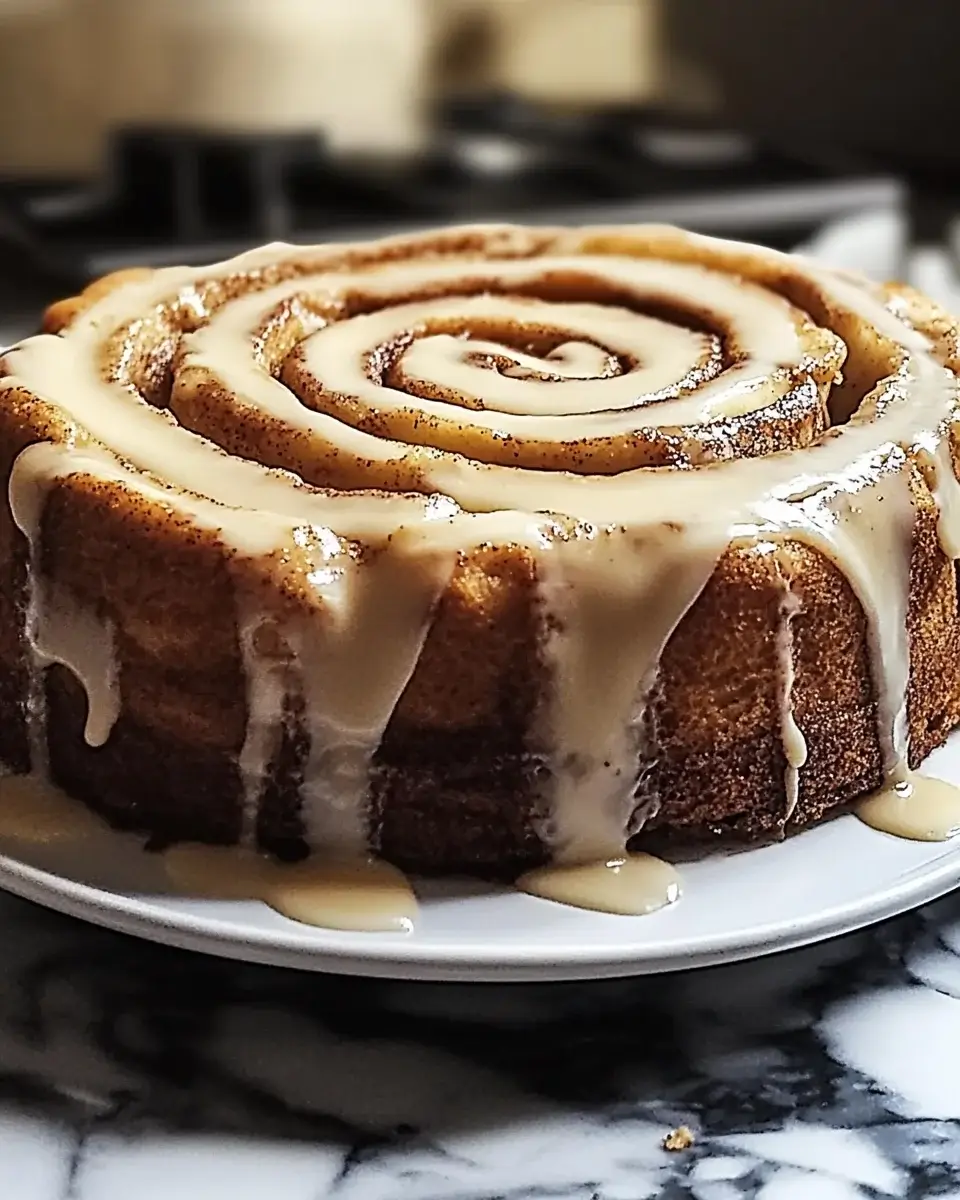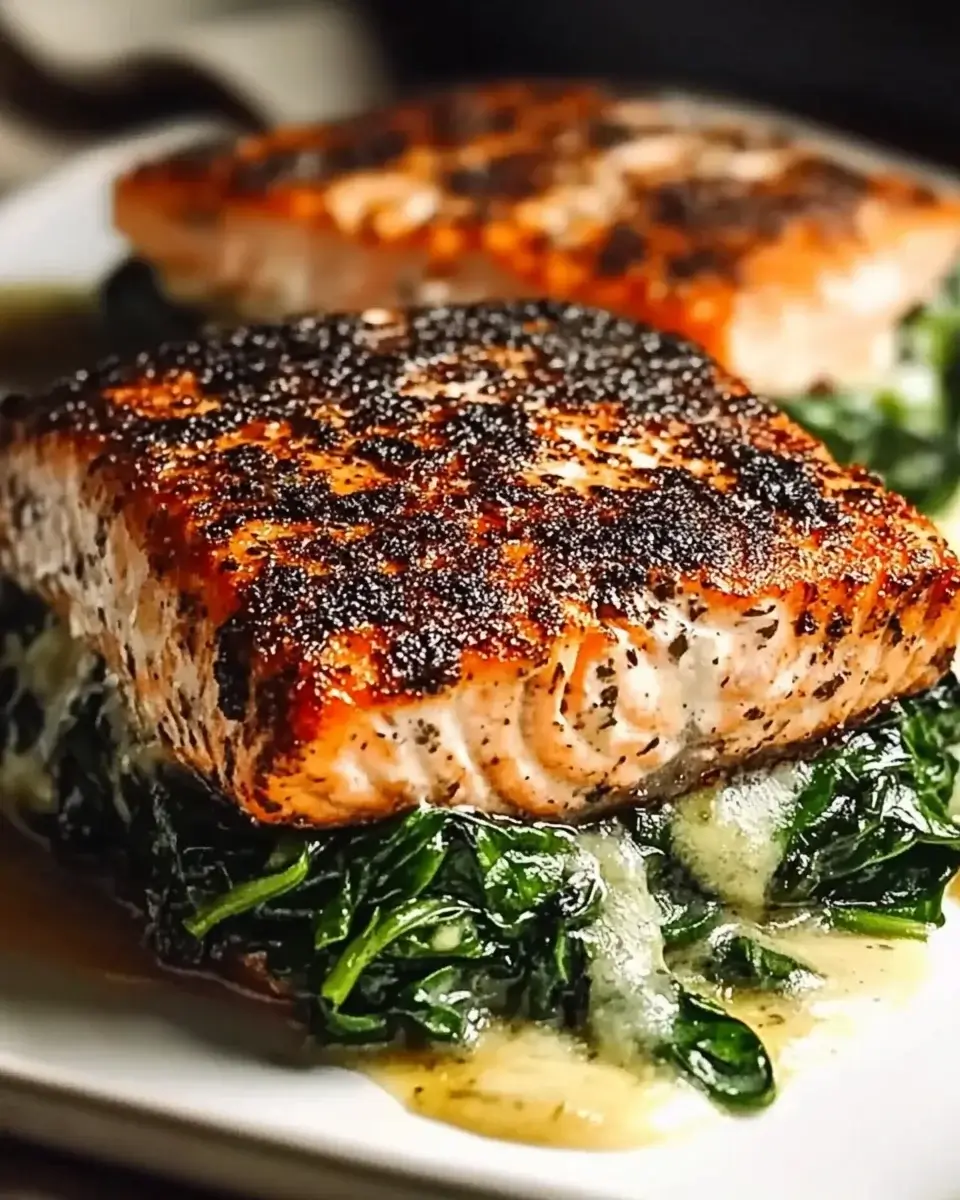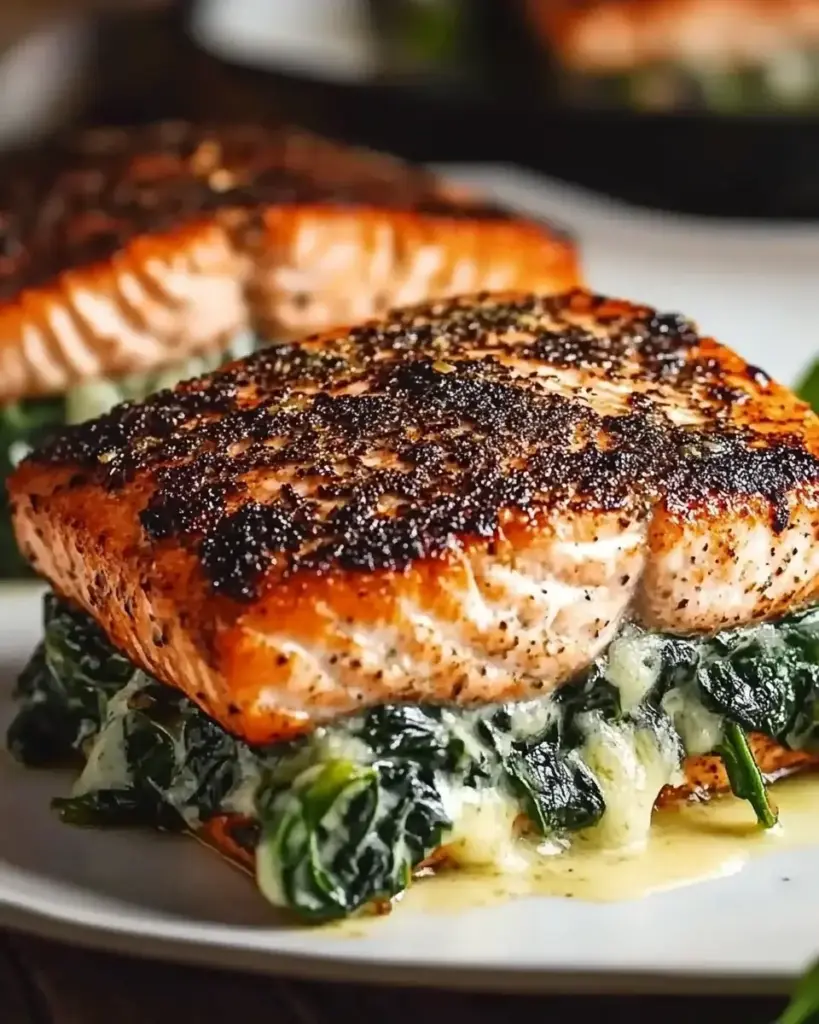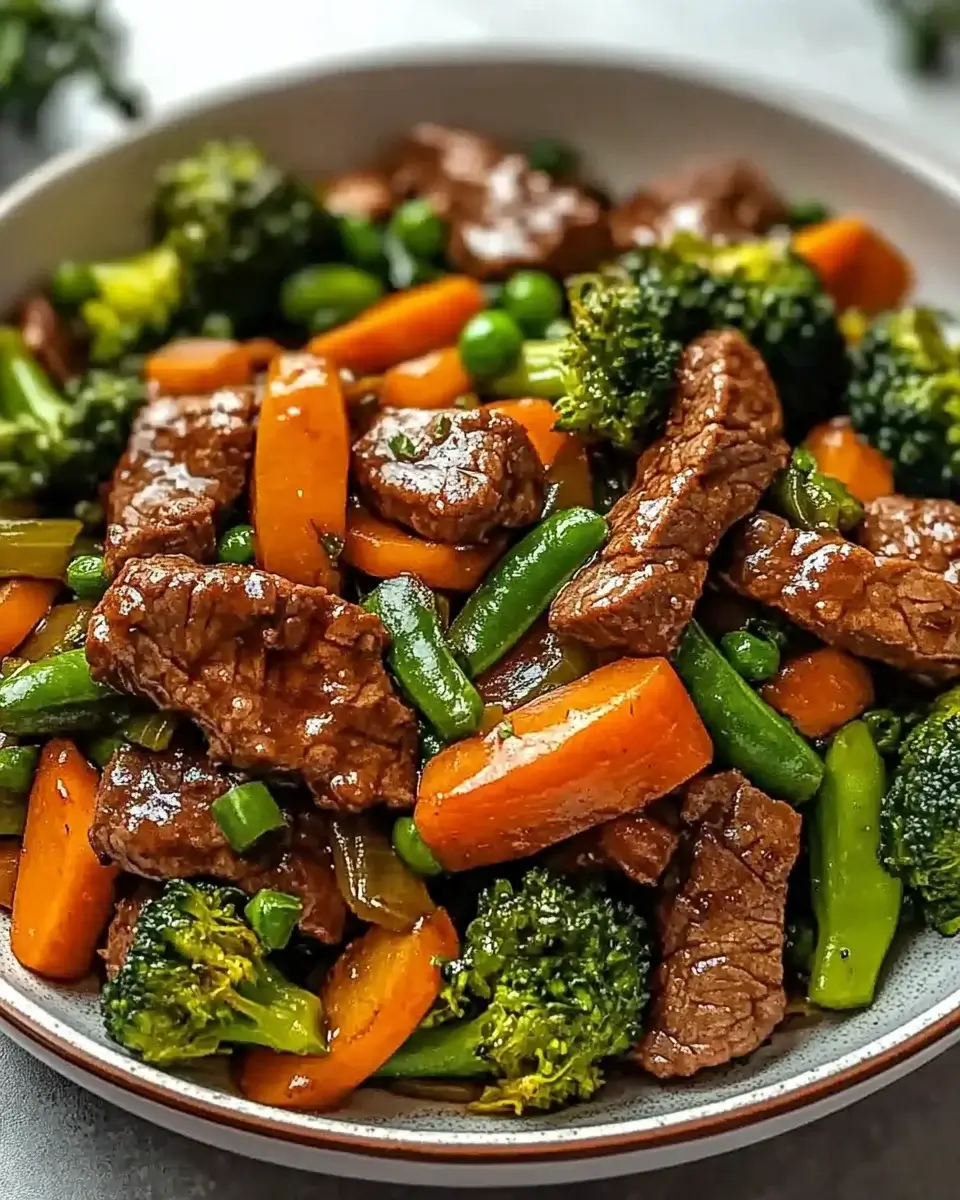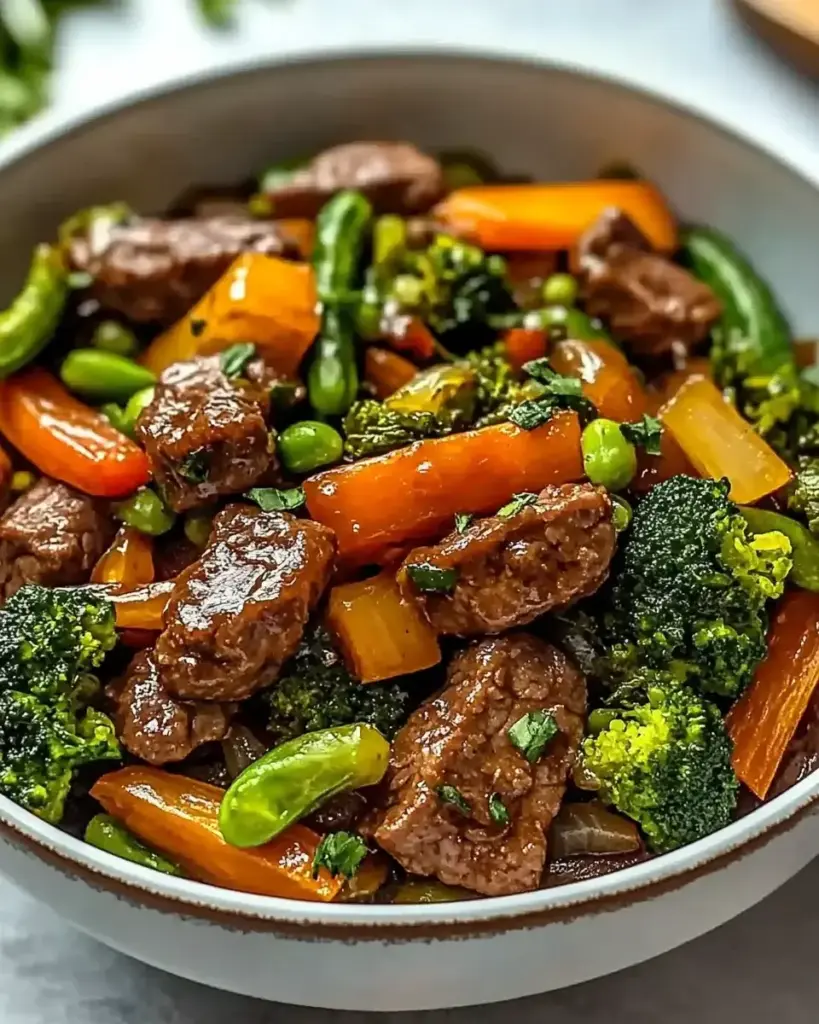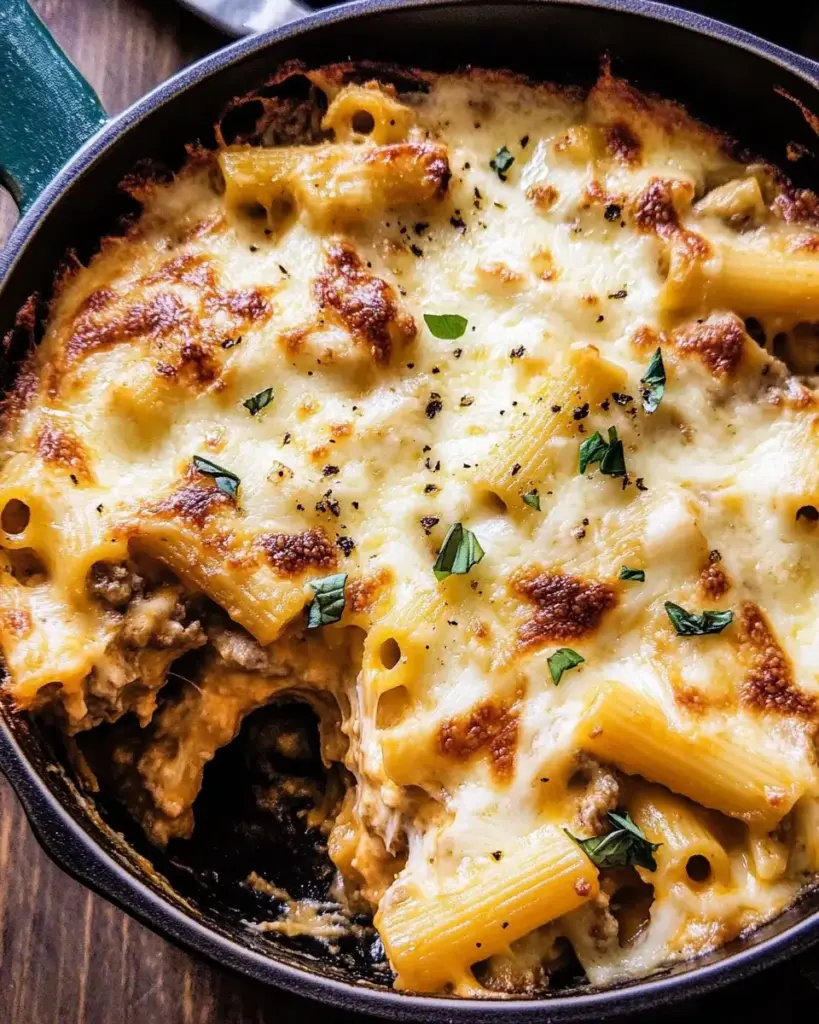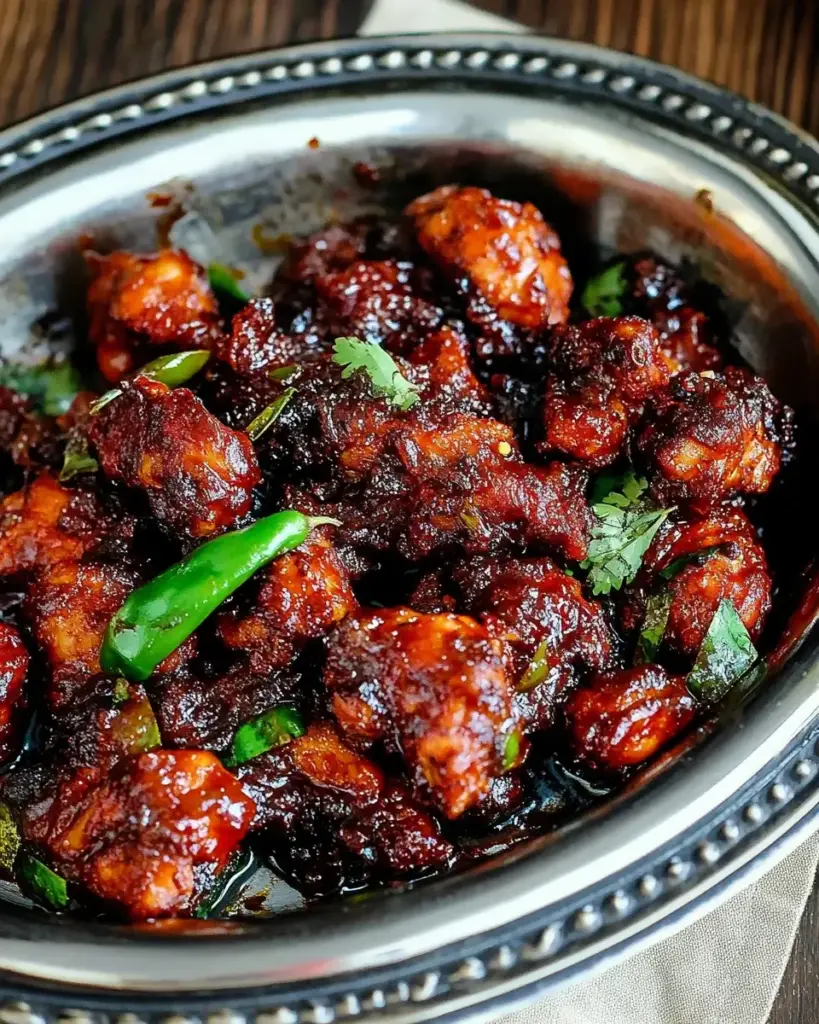Spicy Harissa Chicken Recipe is here to bring excitement to your table! This dish is not only flavorful but also easy to prepare. Harissa, a North African chili paste, adds a delightful kick to the chicken, making it a perfect choice for those who enjoy bold flavors.
Imagine tender chicken thighs marinated in a rich blend of spices, then roasted to perfection. The result? Juicy, crispy-skinned chicken that bursts with flavor in every bite. Whether you’re hosting a dinner party or simply cooking for your family, this recipe is sure to impress.
In this article, we will guide you through the ingredients, preparation steps, and even some variations to suit your taste. Plus, we’ll share tips to ensure your chicken turns out perfectly every time. So, let’s dive into the world of spicy harissa chicken and discover how to create a dish that will leave everyone asking for seconds!
Ingredients for Spicy Harissa Chicken Recipe
Spicy Harissa Chicken Recipe, you’ll need a few simple ingredients. Each component plays a vital role in building the rich flavors that make this dish so special. Here’s what you’ll need:
- 2 pounds chicken thighs, bone-in and skin-on
- 2 tablespoons harissa paste
- 2 tablespoons olive oil
- 1 teaspoon garlic powder
- 1 teaspoon onion powder
- 1 teaspoon smoked paprika
- 1 teaspoon salt
- 1/2 teaspoon black pepper
- 1 tablespoon lemon juice
- Fresh cilantro or parsley for garnish (optional)
These ingredients come together to create a delicious marinade that infuses the chicken with flavor. The harissa paste is the star of the show, providing a spicy and aromatic kick. Olive oil helps to keep the chicken moist while adding richness. The garlic and onion powders, along with smoked paprika, enhance the overall taste, making each bite a delight.
Feel free to adjust the quantities based on your spice preference. If you like it milder, you can reduce the harissa paste or choose a milder variety. Now that you have your ingredients ready, let’s move on to the preparation steps!
Step-by-Step Preparation of Spicy Harissa Chicken Recipe
Spicy Harissa Chicken Recipe. This section will guide you through each step, ensuring your chicken turns out flavorful and juicy. Let’s get started!
Step 1: Marinating the Chicken
Marinating is a crucial step that allows the chicken to absorb all the delicious flavors. Begin by placing the chicken thighs in a large bowl. Next, add the harissa paste, olive oil, garlic powder, onion powder, smoked paprika, salt, black pepper, and lemon juice. Mix everything well until the chicken is fully coated with the marinade.
For the best results, cover the bowl with plastic wrap and let it marinate. You can leave it at room temperature for about 30 minutes or refrigerate it for up to 2 hours. The longer you marinate, the more intense the flavors will be!
Step 2: Preparing the Harissa Sauce
While the chicken is marinating, you can prepare the harissa sauce. If you want to enhance the flavor, consider adding a bit more olive oil or a splash of vinegar to the marinade. This will create a smoother sauce that clings beautifully to the chicken. Just remember, the harissa paste is already packed with flavor, so a little goes a long way!
Once the chicken is ready, you can use the leftover marinade as a sauce. Just make sure to cook it thoroughly before serving to eliminate any raw chicken juices.
Step 3: Cooking the Chicken
After marinating, it’s time to cook the chicken! Preheat your oven to 400°F (200°C). Line a baking sheet with parchment paper for easy cleanup. Place the marinated chicken thighs on the baking sheet, skin side up. This will help the skin get crispy while cooking.
Bake the chicken in the preheated oven for 35-40 minutes. You’ll know it’s done when the internal temperature reaches 165°F (75°C) and the skin is golden brown and crispy. The aroma will fill your kitchen, making it hard to wait!
Step 4: Serving the Dish
Once the chicken is cooked, remove it from the oven and let it rest for about 5 minutes. This resting period allows the juices to redistribute, keeping the chicken moist. When ready to serve, garnish with fresh cilantro or parsley for a pop of color and freshness.
Pair your spicy harissa chicken with roasted vegetables or a fresh salad for a complete meal. Enjoy the burst of flavors and the compliments from your family and friends!
Variations of Spicy Harissa Chicken Recipe
Spicy Harissa Chicken Recipe is a delightful dish on its own, there are many ways to switch things up! Whether you want to try different proteins or explore vegetarian options, these variations will keep your meals exciting and flavorful. Let’s take a look at some alternatives!
Alternative Proteins to Use
Spicy Harissa Chicken Recipe, you have several tasty options. Here are a few alternatives:
- Chicken Breasts: For a leaner option, use boneless, skinless chicken breasts. They will cook faster, so adjust the baking time to about 25-30 minutes.
- Pork Chops: Bone-in pork chops can be marinated and cooked in the same way. They will absorb the harissa flavors beautifully.
- Fish: Firm fish like salmon or swordfish can also be marinated in the harissa sauce. Bake for about 15-20 minutes, depending on thickness.
- Tofu: For a plant-based option, use extra-firm tofu. Press it to remove excess moisture, then marinate and bake for a delicious, spicy dish.
These alternatives allow you to enjoy the same bold flavors while catering to different dietary preferences. Feel free to experiment with cooking times to ensure everything is perfectly cooked!
Vegetarian Options for Spicy Harissa Chicken Recipe
Spicy Harissa Chicken Recipe, you can easily do so! Here are some ideas to consider:
- Cauliflower Steaks: Slice a head of cauliflower into thick steaks, marinate them in the harissa sauce, and roast until tender and caramelized.
- Chickpeas: Toss canned chickpeas in the harissa marinade and roast them for a crunchy, flavorful snack or salad topping.
- Eggplant: Cut eggplant into thick slices, marinate, and bake until soft and flavorful. This makes a great side dish or main course.
- Portobello Mushrooms: Marinate large portobello caps and grill or bake them for a hearty, meaty texture that pairs well with the spices.
These vegetarian options are not only delicious but also packed with nutrients. They allow everyone to enjoy the vibrant flavors of harissa, regardless of their dietary choices!
Cooking Note for Spicy Harissa Chicken Recipe
Spicy Harissa Chicken Recipe, there are a few important cooking notes to keep in mind. These tips will help you achieve the best results and ensure your chicken is flavorful and juicy.
First, always check the freshness of your ingredients. Fresh chicken and high-quality harissa paste will significantly enhance the flavor of your dish. If you can, opt for homemade harissa for a more personalized touch. You can easily make it by blending roasted red peppers, garlic, spices, and olive oil.
Next, consider the size of your chicken thighs. If they are particularly large, they may require a bit more cooking time. Always use a meat thermometer to check for doneness. The internal temperature should reach 165°F (75°C) to ensure the chicken is safe to eat.
Another tip is to let the chicken rest after baking. This step is crucial as it allows the juices to redistribute throughout the meat, resulting in a more tender and juicy bite. If you cut into the chicken too soon, you may lose those delicious juices!
Lastly, feel free to adjust the cooking time based on your oven. Every oven is different, and some may cook faster than others. Keep an eye on your chicken as it bakes, and don’t hesitate to make adjustments as needed.
Spicy Harissa Chicken Recipe that will impress everyone at your table!
Serving Suggestions for Spicy Harissa Chicken Recipe
Spicy Harissa Chicken Recipe, it’s time to think about how to serve it! The right sides can elevate your meal and create a well-rounded dining experience. Here are some fantastic serving suggestions that pair beautifully with the spicy chicken:
- Roasted Vegetables: A medley of seasonal vegetables like bell peppers, zucchini, and carrots roasted with olive oil and herbs complements the spicy flavors of the chicken. The sweetness of the roasted veggies balances the heat perfectly.
- Fresh Salad: A crisp salad with mixed greens, cherry tomatoes, cucumber, and a light vinaigrette adds a refreshing contrast. You can also toss in some feta cheese or avocado for extra creaminess.
- Couscous or Quinoa: Serve the chicken over a bed of fluffy couscous or quinoa. These grains soak up the delicious juices from the chicken, making each bite flavorful. You can add herbs and lemon zest to the grains for added freshness.
- Pita Bread: Warm pita bread is perfect for scooping up the chicken and any sauce. You can also serve it with a side of hummus or tzatziki for dipping.
- Rice Pilaf: A fragrant rice pilaf with spices and nuts can be a delightful side. The nutty flavors of the rice will enhance the overall meal.
Spicy Harissa Chicken Recipe with these delightful sides, and watch your family and friends rave about your culinary skills!

Tips for Perfecting Your Spicy Harissa Chicken Recipe
Spicy Harissa Chicken Recipe turns out perfectly every time, consider these helpful tips. They will guide you in achieving the best flavor and texture, making your dish a standout at any meal.
- Choose Quality Ingredients: Start with fresh, high-quality chicken thighs. The better the chicken, the more flavorful your dish will be. Look for organic or free-range options if possible.
- Marinate Longer: While 30 minutes is sufficient, marinating for up to 2 hours or even overnight will deepen the flavors. Just remember to keep it in the refrigerator during longer marination.
- Adjust Spice Levels: If you’re sensitive to heat, feel free to reduce the amount of harissa paste. You can also mix in some yogurt or sour cream to balance the spice if needed.
- Use a Meat Thermometer: To avoid overcooking, use a meat thermometer to check the internal temperature. Aim for 165°F (75°C) for perfectly cooked chicken.
- Let It Rest: After baking, let the chicken rest for about 5 minutes. This allows the juices to redistribute, ensuring each bite is juicy and tender.
- Experiment with Garnishes: Fresh herbs like cilantro or parsley add a burst of freshness. You can also sprinkle some toasted nuts or seeds for added texture and flavor.
- Pair with the Right Sides: As mentioned earlier, serving your chicken with complementary sides enhances the overall meal. Choose sides that balance the spice and add variety to your plate.
- Store Leftovers Properly: If you have leftovers, store them in an airtight container in the refrigerator. They can be enjoyed cold in salads or reheated for a quick meal.
Spicy Harissa Chicken Recipe. Each time you prepare this dish, you’ll discover new ways to enhance its flavor and presentation. Enjoy the process and the delicious results!
Breakdown of Time for Spicy Harissa Chicken Recipe
Spicy Harissa Chicken Recipe can help you plan your meal better. Here’s a simple breakdown of the time required for preparation and cooking. This way, you can enjoy a delicious dinner without any stress!
Prep Time
The prep time for this recipe is approximately 10 minutes. This includes gathering your ingredients, mixing the marinade, and coating the chicken thighs. If you choose to marinate the chicken for longer, you can adjust this time accordingly. Remember, the longer you marinate, the more flavorful your chicken will be!
Cooking Time
Once your chicken is marinated, the cooking time is about 35-40 minutes. Preheating the oven takes a few minutes, but the actual baking process is straightforward. Just place the chicken in the oven and let it cook until it reaches the perfect internal temperature of 165°F (75°C). You can use this time to prepare your sides or set the table!
Total Time
Spicy Harissa Chicken Recipe to take around 45-50 minutes from start to finish, not including marination time. If you marinate for 30 minutes, the total time will be about 1 hour and 15 minutes. If you opt for a longer marination period, such as 2 hours, the total time will be around 2 hours and 10 minutes. This makes it easy to plan your meal around your schedule!
Spicy Harissa Chicken Recipe and impress your family or guests with a delicious, home-cooked meal!
Nutritional Information for Spicy Harissa Chicken Recipe
Spicy Harissa Chicken Recipe not only tantalizes your taste buds but also provides valuable nutrients. Here’s a closer look at the nutritional information per serving, so you can enjoy this dish while keeping your health in mind.
Calories
Spicy Harissa Chicken Recipe contains approximately 320 calories. This makes it a satisfying option for dinner without being overly heavy. The combination of chicken and spices provides a flavorful meal that can fit into various dietary plans.
Protein Content
Protein is a vital nutrient for building and repairing tissues, and this recipe delivers! Each serving offers about 24 grams of protein. Chicken thighs are an excellent source of protein, making this dish a great choice for those looking to increase their protein intake. Whether you’re an athlete or just trying to maintain a healthy lifestyle, this recipe supports your nutritional needs.
Sodium Levels
Spicy Harissa Chicken Recipe contains around 600 milligrams. While this is a reasonable amount for a flavorful dish, it’s essential to be mindful of your overall sodium intake throughout the day. If you’re watching your sodium levels, consider using low-sodium harissa paste or reducing the added salt in the marinade.
Spicy Harissa Chicken Recipe is not only delicious but also provides a good balance of calories, protein, and sodium. Enjoy this dish as part of a well-rounded meal, and feel good about the nutritious choices you’re making!
FAQs about Spicy Harissa Chicken Recipe
What is harissa and how is it used in cooking?
Spicy Harissa Chicken Recipe, harissa serves as the main marinade, infusing the chicken with its unique spicy and aromatic flavors. You can also use harissa in soups, dips, or as a condiment to enhance your meals.
Can I make Spicy Harissa Chicken Recipe ahead of time?
Spicy Harissa Chicken Recipe is perfect for meal prep. You can marinate the chicken thighs a day in advance and store them in the refrigerator. This allows the flavors to develop even more. When you’re ready to cook, simply bake the marinated chicken as directed. If you have leftovers, they can be stored in an airtight container in the fridge for up to three days. Reheat them in the oven or microwave for a quick and delicious meal!
What can I serve with Spicy Harissa Chicken Recipe?
Spicy Harissa Chicken Recipe. Consider pairing it with:
- Roasted Vegetables: A mix of seasonal veggies adds color and nutrition.
- Fresh Salad: A light salad with greens and a tangy dressing balances the spice.
- Couscous or Quinoa: These grains soak up the flavorful juices from the chicken.
- Pita Bread: Perfect for scooping up the chicken and sauce.
- Rice Pilaf: A fragrant rice dish complements the bold flavors of the chicken.
These sides not only enhance the meal but also create a well-rounded dining experience!
How spicy is the Spicy Harissa Chicken Recipe?
Spicy Harissa Chicken Recipe can vary based on the type and amount of harissa paste you use. Traditional harissa can be quite spicy, but you can adjust the heat to your liking. If you prefer a milder flavor, simply reduce the amount of harissa paste or choose a milder variety. Additionally, serving the chicken with cooling sides like yogurt or a fresh salad can help balance the heat. Overall, this recipe is customizable to suit your spice tolerance!
Conclusion on Spicy Harissa Chicken Recipe
Spicy Harissa Chicken Recipe is a fantastic way to bring bold flavors to your dinner table. With its simple ingredients and straightforward preparation, this dish is perfect for both novice cooks and seasoned chefs. The combination of harissa paste, spices, and juicy chicken thighs creates a meal that is not only delicious but also satisfying.
As you’ve seen, there are numerous ways to customize this recipe. Whether you choose to experiment with different proteins or explore vegetarian options, the possibilities are endless. The versatility of harissa allows you to adapt the dish to suit your taste preferences and dietary needs.
Remember to take your time with the marination process, as it enhances the flavors significantly. And don’t forget to serve your spicy chicken with complementary sides that balance the heat and add variety to your meal. With a little creativity, you can turn this recipe into a family favorite that everyone will love.
Spicy Harissa Chicken Recipe a try? Gather your ingredients, follow the steps, and enjoy a delightful meal that’s sure to impress. Happy cooking!
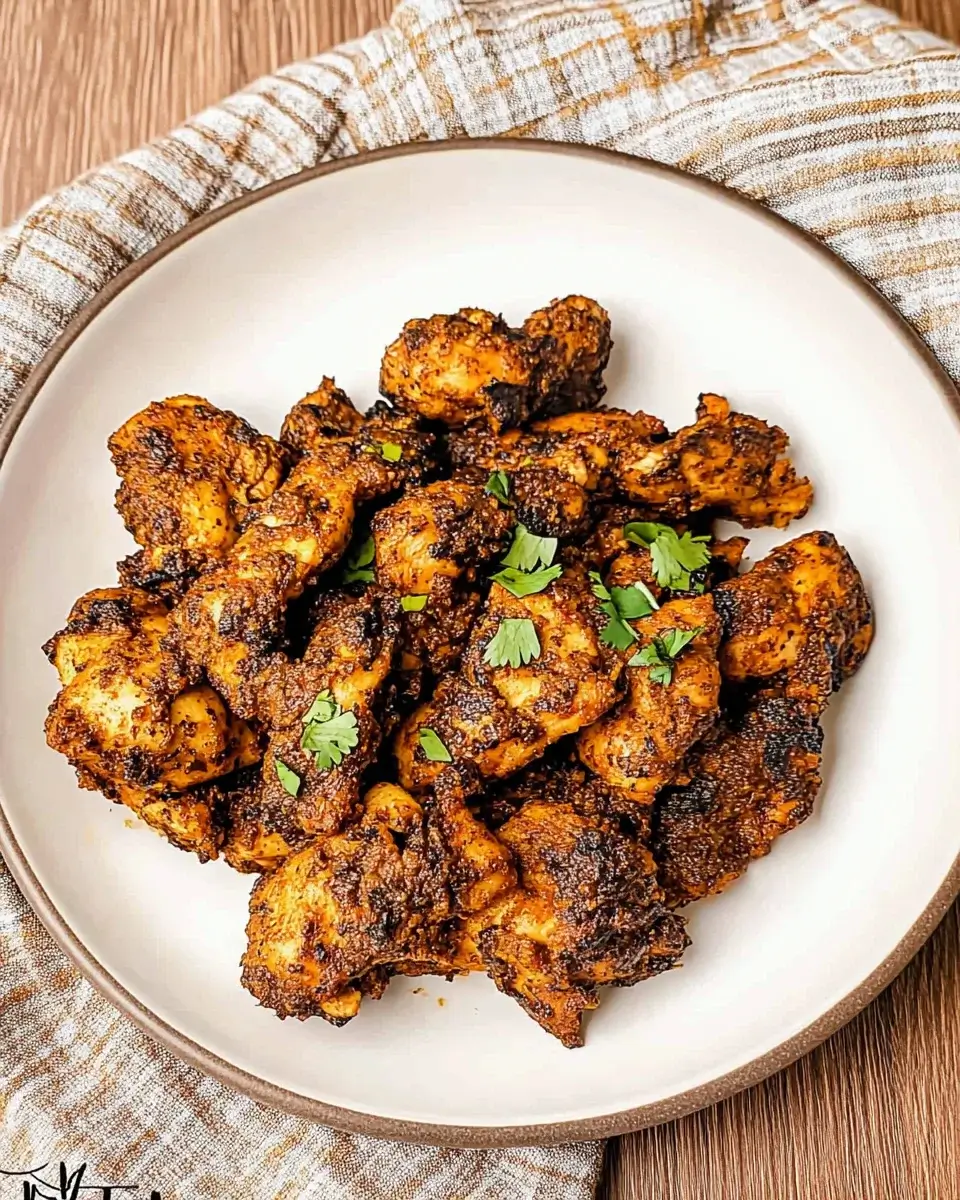
Spicy Harissa Chicken Recipe will elevate your dinner!
Ingredients
Method
- In a small bowl, mix together the olive oil, harissa powder, lemon juice, smoked paprika, ground cumin, and cayenne pepper until a thick paste forms.
- Rub the marinade evenly over the chicken thighs or place everything in a zip-top bag or bowl and mix thoroughly to coat. Let the chicken marinate for at least 1 hour in the refrigerator for best flavor.
- Preheat the oven to 425°F (220°C). Line a baking sheet with parchment paper or foil.
- Arrange the marinated chicken thighs in a single layer on the baking sheet.
- Bake for 18 to 20 minutes or until the internal temperature of the chicken reaches 165°F (75°C).
- Remove from the oven and let rest for 5 minutes before serving to lock in the juices.
Notes
For even deeper flavor, marinate overnight.
Serve with a cucumber yogurt dip, cauliflower rice, or grilled vegetables for a balanced low-carb meal.

